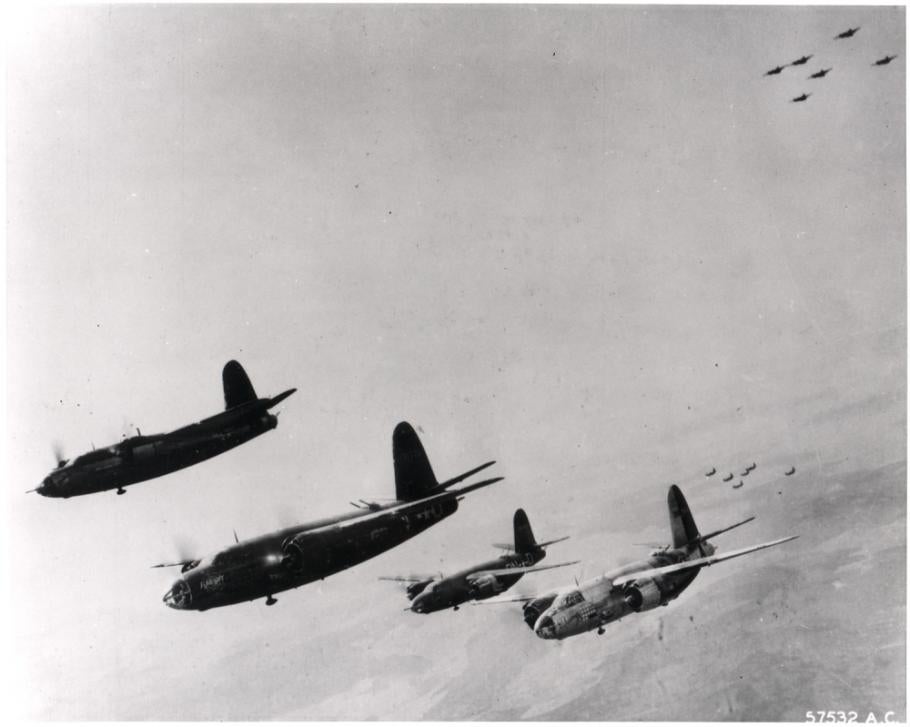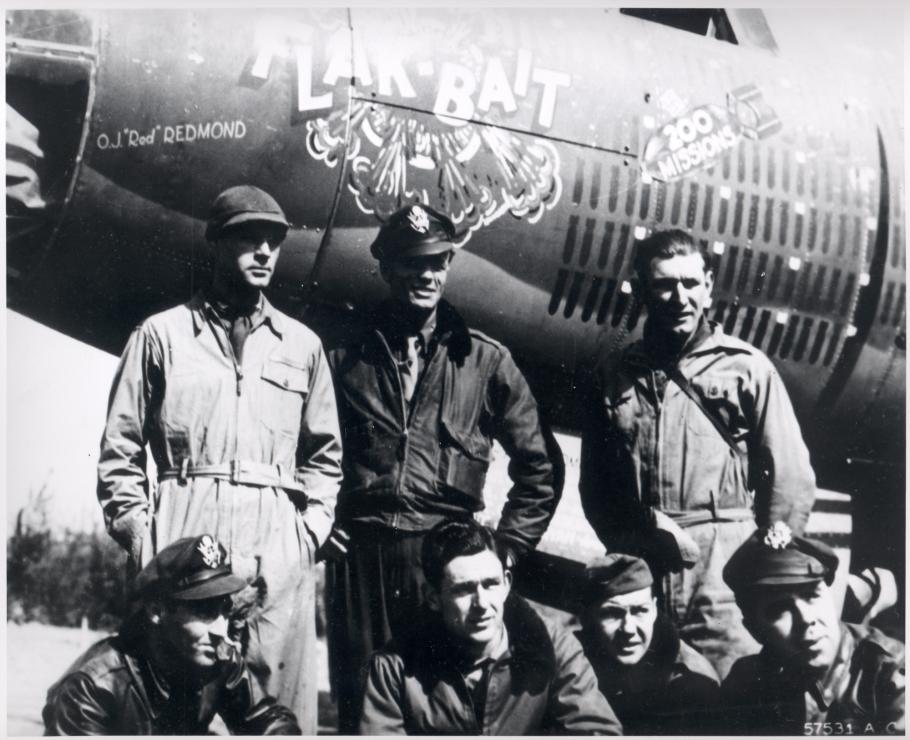On Tuesday, April 17, 1945, Flak-Bait completed its historic 200th mission as it led the 322nd Bombardment Group in a raid on Magdeburg, Germany. That journey, which began in late July 1943, made it the American airplane that flew the most sorties, or individual flights, during World War II. Overall, this one Marauder would fly a total 725 hours while delivering 375 tons of bombs, covering 177,460 miles, and consuming 157,850 gallons of gasoline. In the process, Flak-Bait accumulated over 1,000 patched holes from combat damage while bearing the wear-and-tear, scratches, and dings of flying in the air war against Nazi Germany.
Bill Fort’s son, Grady, shared with us a story about his father's April 17 flight as pilot of Flak-Bait. The co-pilot, Col. John S. Samuel, was the commanding officer of the 322nd Bombardment Group. He wanted to take part in that historic mission and selected Fort and his crew, usually assigned to another Marauder named Shorty, to accompany him. That was the only time any of them had flown in Flak-Bait. The crew listing for the day also mentions a “W/C O.C. Hutton,” which makes a total of eight people on board that day. We'd love to hear if any of our readers have a connection to that individual? Being able to recognize this important anniversary while Flak-Bait is undergoing preservation treatment in the Mary Baker Engen Restoration Hangar is important for the Museum. It allows us to share the artifact’s incredible story as we celebrate the people—the pilots, aircrew, mechanics, ground personnel, and the production workers—who made its flight, and the flights of so many other American aircraft, possible during World War II.


